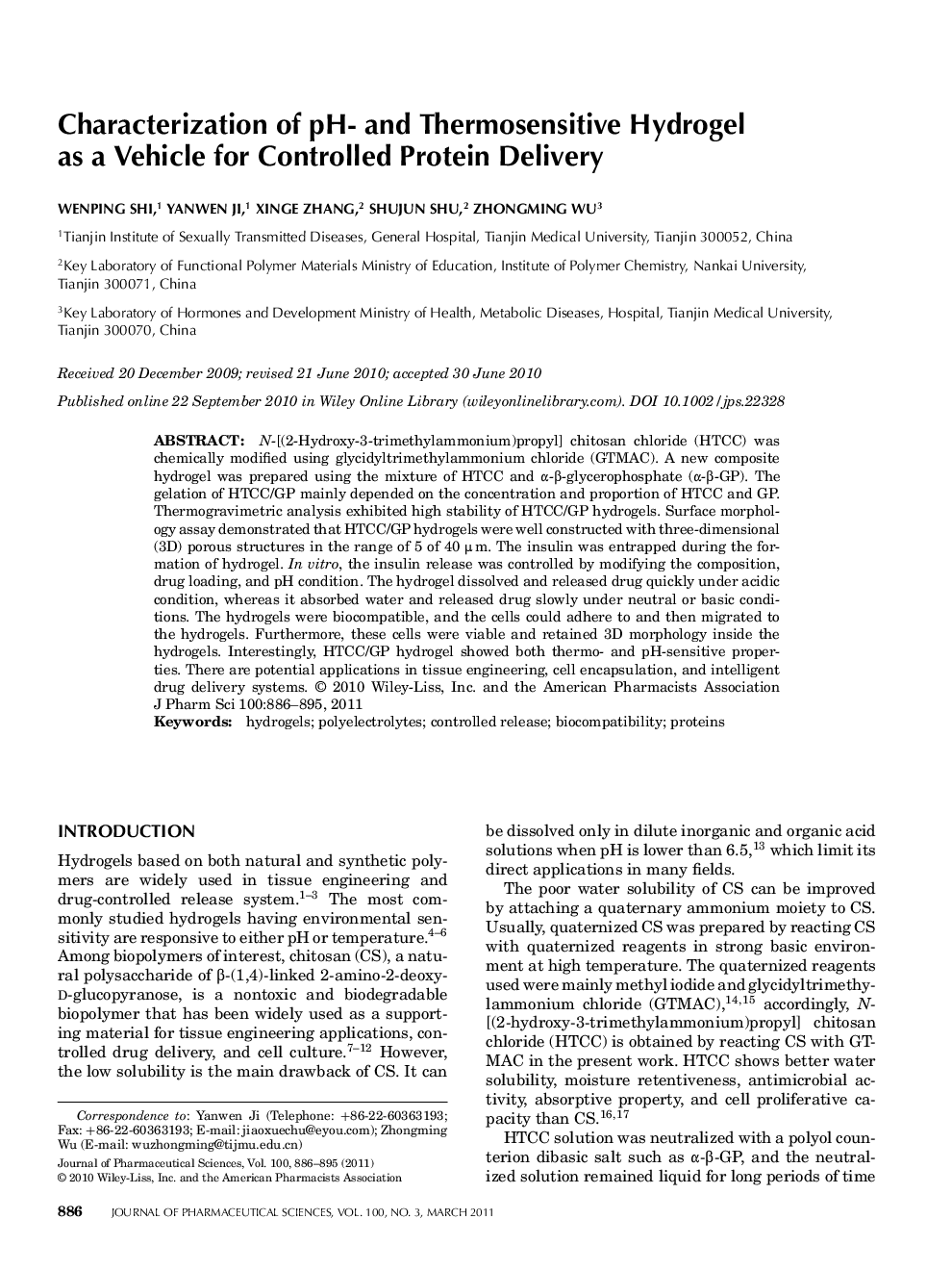| Article ID | Journal | Published Year | Pages | File Type |
|---|---|---|---|---|
| 2485805 | Journal of Pharmaceutical Sciences | 2011 | 10 Pages |
Abstract
N-[(2-Hydroxy-3-trimethylammonium)propyl] chitosan chloride (HTCC) was chemically modified using glycidyltrimethylammonium chloride (GTMAC). A new composite hydrogel was prepared using the mixture of HTCC and α-β-glycerophosphate (α-β-GP). The gelation of HTCC/GP mainly depended on the concentration and proportion of HTCC and GP. Thermogravimetric analysis exhibited high stability of HTCC/GP hydrogels. Surface morphology assay demonstrated that HTCC/GP hydrogels were well constructed with three-dimensional (3D) porous structures in the range of 5 of 40 μm. The insulin was entrapped during the formation of hydrogel. In vitro, the insulin release was controlled by modifying the composition, drug loading, and pH condition. The hydrogel dissolved and released drug quickly under acidic condition, whereas it absorbed water and released drug slowly under neutral or basic conditions. The hydrogels were biocompatible, and the cells could adhere to and then migrated to the hydrogels. Furthermore, these cells were viable and retained 3D morphology inside the hydrogels. Interestingly, HTCC/GP hydrogel showed both thermo- and pH-sensitive properties. There are potential applications in tissue engineering, cell encapsulation, and intelligent drug delivery systems.
Related Topics
Health Sciences
Pharmacology, Toxicology and Pharmaceutical Science
Drug Discovery
Authors
Wenping Shi, Yanwen Ji, Xinge Zhang, Shujun Shu, Zhongming Wu,
